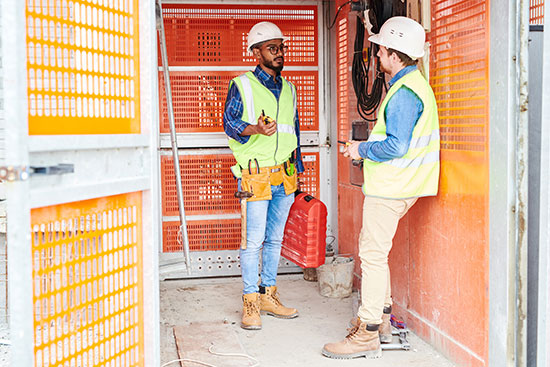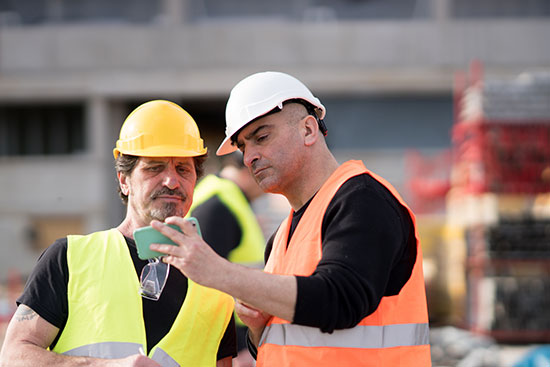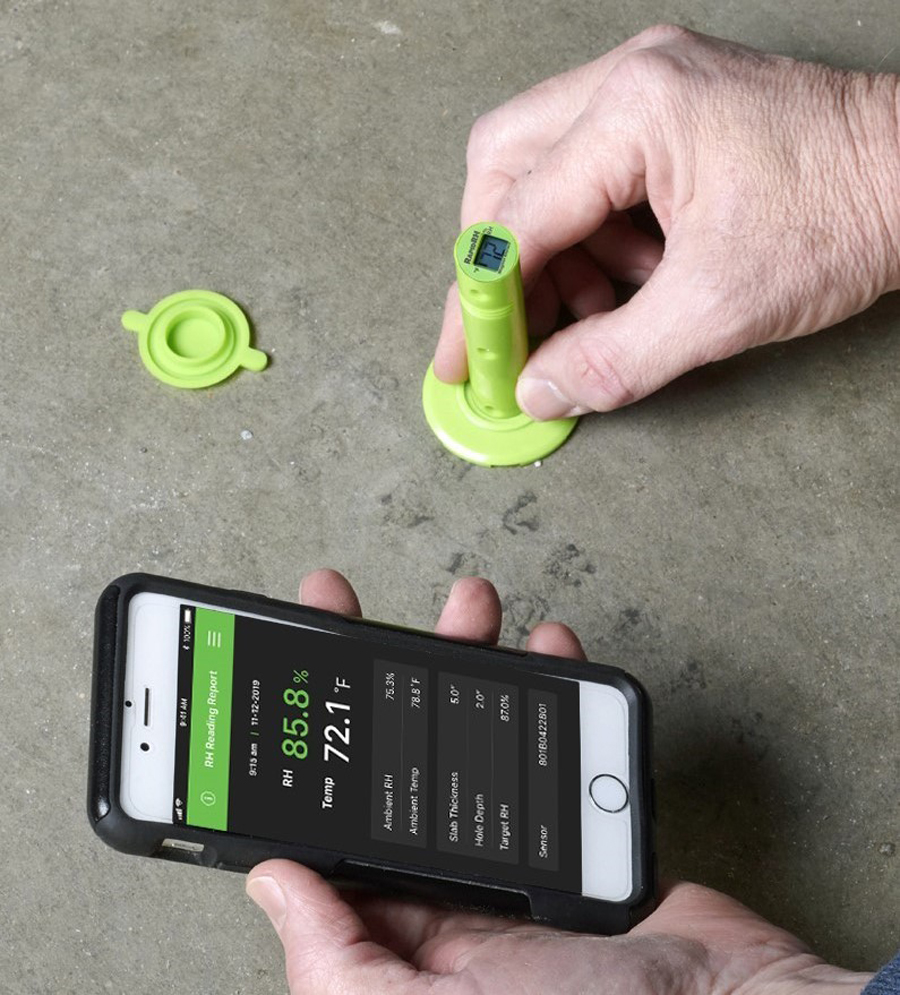How to Minimize Construction Obstacles When Evaluating Concrete Moisture
 On every commercial flooring project, it’s important to consider how moisture could play havoc with your results. When it comes to wood flooring, for example, excess moisture can cause buckling, cupping, warping, cracking, mildew, mold, and other catastrophic problems. Any type of flooring installed over a concrete slab may be especially at risk. Water, after all, is an essential ingredient in concrete. It is easy to downplay or neglect this fact, given that concrete’s look and feel may suggest that it is perfectly dry.
On every commercial flooring project, it’s important to consider how moisture could play havoc with your results. When it comes to wood flooring, for example, excess moisture can cause buckling, cupping, warping, cracking, mildew, mold, and other catastrophic problems. Any type of flooring installed over a concrete slab may be especially at risk. Water, after all, is an essential ingredient in concrete. It is easy to downplay or neglect this fact, given that concrete’s look and feel may suggest that it is perfectly dry.
Always remember that there’s only one way to know for sure that a concrete slab is sufficiently dry for your flooring installation and that is to perform a reliable, accurate concrete moisture test. Today, testing is fast, easy, and inexpensive to perform. Even though various methods are available, the only scientifically proven method is the in situ relative humidity (RH) test.
Obstacles to Moisture Testing
Know that you may run into one or more common obstacles on construction projects that could affect how or even if moisture testing is done. What are some of the biggest problems you may encounter? Watch for (1) pressures to minimize construction delays, (2) issues with communication, and (3) a lack of knowledge or skills. How can these kinds of issues affect you, and how can you overcome them?
Wisdom About Construction Timelines
Often, construction projects operate under an extremely tight time frame. Unanticipated project delays can exacerbate pressures to move things forward despite important reasons to wait. Certainly, you want the concrete to dry to the level specified by the manufacturer of the finished floor product prior to installation. But what happens if others don’t really understand or fully share your concerns?
One solution is to gain a high level of understanding upfront among the interested parties, including you, the client, and the general contractor, about the need for concrete to dry, how long that is likely to take, and the importance of accurate moisture testing.
If everyone can be successfully informed about these matters from the get-go, either adequate time for the slab to dry naturally can get built into the project timeline or necessary budgetary allocations can be made for the installation of some type of moisture remediation product. Either option will help ensure a successful installation and should alleviate much of the pressure to move forward when it is unwise to do so. Even if your part in the project doesn’t begin until midstream, there are still other important things you can do, especially when it comes to communicating about moisture testing.
Communication with Power
 Of course, it’s critical for all key players to understand moisture in concrete and why you need to test for it. Moisture is the number one cause of flooring failures. And it will be a huge headache and a lot of expense to go back later, pinpoint the source of the moisture problem, and address it. Not to mention the harm that may be done to one’s reputation.
Of course, it’s critical for all key players to understand moisture in concrete and why you need to test for it. Moisture is the number one cause of flooring failures. And it will be a huge headache and a lot of expense to go back later, pinpoint the source of the moisture problem, and address it. Not to mention the harm that may be done to one’s reputation.
One powerful method of communication that can catch people’s attention is to quietly, almost imperceptibly, involve them directly in the moisture testing itself. When the in situ RH sensors for assessing moisture get installed in the slab, you could provide the general contractor (GC) and/or the client with the device that reads the RH percentage in the concrete.
For the popular Rapid RH L6 test by Wagner Meters, you simply give them a Rapid RH L6 Total Reader that they can use to monitor the changes in concrete moisture over time. If they use the Total Reader, then their level of interest and ownership in the testing process may grow significantly. When they see firsthand, while using their own Total Reader, that moisture levels are too high, they are more likely to become advocates for waiting and allowing the concrete to dry adequately. They won’t just be taking someone else’s word for it.
Knowledge Is Powerful
RH moisture testing is surprisingly easy to perform correctly. Even so, knowing several important things will help ensure that moisture testing is done right for meaningful, accurate test results. Here are some key things to know and communicate with others involved in the flooring project.
First, pay attention to ambient conditions. The ASTM standard for RH testing, known as ASTM F2170, requires that the building be at service conditions when conducting the RH test. This simply means that the ambient RH and temperature should match what’s expected when the building is placed into service. Not only is this necessary to comply with the F2170 standard, but fully enclosing the building and turning on the HVAC to achieve service conditions should also contribute toward getting the concrete to dry faster.
Second, pay attention to the number of tests placed in the building. The ASTM standard sets very specific requirements (three tests for the first 1000 square feet, and one test for each additional 1000 square feet). Complying with these requirements offers the GC and the flooring professional greater assurance of an accurate assessment of the slab’s true moisture condition, which, in turn, can minimize the risk of a moisture-related flooring failure down line. Communicate this fact to all key players to avoid pressure to cut corners in how the testing is done.
Third, clearly convey the advantages of using the RH test and steering clear of other ways to test for moisture. Certain other methods may seem familiar and acceptable to some in the industry. However, only the RH test has a scientific pedigree demonstrating its accuracy and reliability when performed per the guidelines of the ASTM standard.
The Superior Test
 The RH test gives a depth-specific measurement of the moisture condition deep within the concrete slab. Studies have shown that this is the moisture that the finished floor will “see” once it is installed. Surface-based test methods, such as the anhydrous calcium chloride test, often give misleading results. For one, they can be unduly affected by ambient conditions.
The RH test gives a depth-specific measurement of the moisture condition deep within the concrete slab. Studies have shown that this is the moisture that the finished floor will “see” once it is installed. Surface-based test methods, such as the anhydrous calcium chloride test, often give misleading results. For one, they can be unduly affected by ambient conditions.
Know also that the RH test is much faster than other methods. RH test results can be obtained within 24 hours, something no other industry-approved test method comes close to matching.
More important than simply performing a concrete moisture test is to perform the right test. It’s your safety net for avoiding a flooring failure. From a scientific perspective, as well as for its ease and simplicity of use, the in situ RH test method is the clear winner. For more information about RH testing and how to use it for all your commercial flooring projects, call Wagner Meters at (800) 207-2214 or visit www.wagnermeters.com.